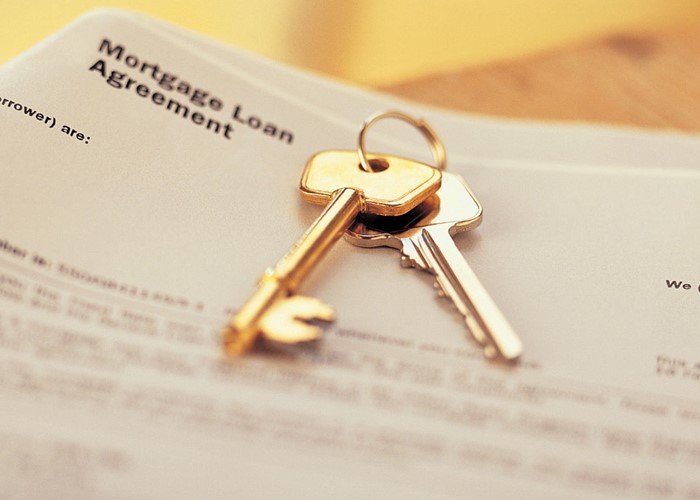Homeowners face another two years of payment shocks

With the base rate set to rise from 2012, millions of homeowners face higher mortgage rates.
According to property experts, the three most important factors when choosing a home are location, location and location. Indeed, it's said that it's better to buy the worst home in the best street than the best home in the worst street!
However, when choosing a mortgage, the three most important factors are:
- the size of your loan (how much you borrow);
- its term (how quickly you pay it back); and
- its charges (the interest rate and fees linked to your loan).
Of course, the more you borrow, the more you pay back. Likewise, the more years you take to repay your home loan, the more interest you'll pay. Similarly, the higher your mortgage rate and fees, the more you'll pay in the long run.
When mortgage rates rise
What few homeowners appreciate is how relatively modest changes in interest rates can make big differences to their monthly payments.
For example, here are the monthly payments for a £150,000, interest-only mortgage at various rates of interest:
|
Mortgage rate |
Monthly payments |
Increase |
|
2% |
£250 |
- |
|
3% |
£375 |
£125 |
|
4% |
£500 |
£125 |
|
5% |
£625 |
£125 |
|
6% |
£750 |
£125 |
|
7% |
£875 |
£125 |
As you can see, every 1% rise in the mortgage rate costs another £125 a month, or £1,500 a year. Thus, if this borrower's mortgage rate went from 2% to 4%, then his/her payments would double to £500 from £250.
However, when rates rise, the monthly payments on repayment mortgages don't go up as steeply as those for interest-only loans. This is because payments for a repayment mortgage are partly interest and partly repayment of your debt.
Here's how the numbers look for the same loan, but repaid over 25 years, using lovemoney.com'smortgage calculator:
|
Mortgage rate |
Monthly payments |
Increase |
|
2% |
£636 |
- |
|
3% |
£711 |
£75 |
|
4% |
£792 |
£81 |
|
5% |
£877 |
£85 |
|
6% |
£966 |
£89 |
|
7% |
£1,060 |
£94 |
As you can see, the payments on this repayment loan don't go up as steeply as interest rates rise. The increase as the rate doubles from 2% to 4% is only £156, versus £250 for the interest-only loan above.
Tumbling rates
Since March 2009, the Bank of England's base rate has been stuck at an all-time low of 0.5%. This has been fantastic for homeowners, as they have enjoyed some of the lowest mortgage rates in history.
Related how-to guide

Buy a property
Buying a property is a massive financial commitment. Follow these tips and it should all go relatively smoothly!
See the guideThe biggest winners among the UK's 11.3 million mortgage borrowers are those with variable rates -- especially tracker mortgages, as the rates charged by these loans have fallen steeply in line with the base rate.
For example, a homeowner with a 'base plus 1%' tracker mortgage would have paid an interest rate of 6.75% four years ago, being the July 2007 base rate of 5.75%, plus 1% on top.
Following the credit crunch, banking meltdown and economic recession, the base rate has collapsed. Today, this borrower pays just 1.5% a year, thanks to a 5.25% cut in the base rate.
Rising rates cause 'payment shock'
One problem with low mortgage rates is that they often encourage borrowers to take on more debt than is sensible. For example, during 2003 to 2007 (the peak years of the housing and credit bubbles), our total mortgage debt rose by £10 billion a month.
Fortunately, this hasn't really happened since 2007, thanks to tighter lending standards and falling house prices. In fact, from December 2007 to May 2011, our total mortgage debt increased by just £56.5 billion, or under 4.8%.
Another problem with ultra-low mortgage rates is that homeowners become accustomed to making low repayments, with many borrowers not setting aside spare cash for when rates start to rise again. Thus, when rates start to rise, these borrowers suffer 'payment shock' as their monthly repayments start to climb once more.
Higher rates are a certainty
Of course, with the base rate at a 317-year low, it can only go up. How and when this will happen is difficult to predict, with money-market expectations moving up and down with the latest economic and fiscal events.
Related blog post
- John Fitzsimons writes:
Conveyancing must be brought into the 21st Century
Guest blogger Mark Montgomery explains why technology offers an opportunity to cut down on sales falling through, as well as keeping property buyers up to date at all times.
Read this post
Nevertheless, I think it would be wise to assume that the base rate will rise by 2% over the next two years, hitting 2.5% by, say, mid-2013. Obviously, as the base rate goes up, mortgage lenders will scramble to increase their lending rates, too.
Although lenders are slow to lower mortgage rates when the base rate falls, they swiftly hike rates when it rises. For instance, someone paying a variable interest rate of 3% today should budget to pay 5% within two years. For an interest-only mortgage, this would entail a two-thirds (67%) rise in repayments.
In summary, all the evidence points to a higher base rate and higher interest rates in the years ahead. In fact, according to an economic calculation known as the Taylor Rule, the UK's base rate should be 4.2% now, not in three or four years' time!
Therefore, all borrowers with variable-rate mortgages (or loans which aren't fixed for at least three years) should start preparing for higher repayments in the future. Otherwise, payment shock may send them spiralling into arrears and facing possible repossession!
More: Find your ideal mortgage | 13 minutes to the next repossession | 10 things mortgage borrowers should never forget
Most Recent
Comments
-
Rates up or down now or later who knows. But one things for sure as I've cone to learn over the last two and a half years the bank bought this mess down on us, by us I mean all who have mortgages. However will we get out of this if we are stopped from paying back our mortgage debt from the profits made from our investment our homes, when the bank refuse to accept reducing of a mortgage,due to it nit being of commercial benifit to them. Please see article on lenders preventing porting and my comments. Mark my words there's worse far worse to come.
REPORT This comment has been reported. -
Hello again, yocoxy, I see it's your turn to be selective with your comparison periods for the FTSE 100 index and UK property prices. Please run your figures again from 1984, when the Footsie started life at 1,000. What do they reveal? I'll tell you: 1984 to now, Halifax HPI: +412% 1984 to now, FTSE 100: +479% Oh dear, that's shot down your brash 'property rules okay' argument, hasn't it? Let's face it, you thought the unsustainable mid-Noughties bubble would usher in permanently higher house prices, didn't you? Alas, how wrong you were (and are today). Also, the Halifax HPI has fallen 3% in the past 10 months. I expect it to keep falling for some time yet. Is that music to your ears, as it is to mine, yocoxy? :0) Cliff
REPORT This comment has been reported. -
Hi electricblue, You said, "...the UK is still the sixth largest economy in the world." That's true right now, but Brazil and Italy are hot on our heels (and Russia, Canada and India are hot on their tails). Alas, by the end of this decade, the UK might conceivably have dropped to tenth in the world GDP rankings... :0( All the best, Cliff
REPORT This comment has been reported.
Do you want to comment on this article? You need to be signed in for this feature









20 July 2011